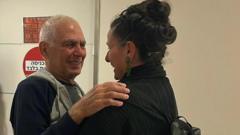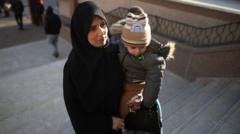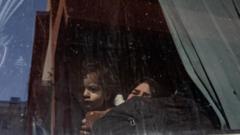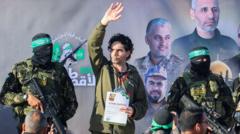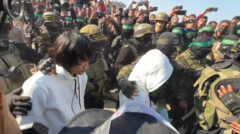The historic souk of Nabatieh, once a thriving marketplace, now lies in ruins, as residents begin the painful process of salvaging what remains after the destruction caused by Israeli airstrikes in response to ongoing regional tensions.
Catastrophic Airstrikes Leave Historic Lebanese Market in Ruins

Catastrophic Airstrikes Leave Historic Lebanese Market in Ruins
Israeli air raids devastate Nabatieh souk, impacting local businesses and community resilience.
In a tragic scene on a chilly December morning, shopkeepers in the devastated market of Nabatieh, southern Lebanon, gathered to sift through the wreckage of their beloved community hub. Among the rubble of what was once a vibrant souk, individuals like Raed Mokaled, a 58-year-old optical business owner, shared their stories of loss and resilience.
Israel’s military operations, consisting of extensive air raids followed by a ground invasion, began in late September. These actions were part of a retaliation strategy targeting Hezbollah, a militant group involved in attacks against Israel, which had ramped up its activities following the Oct. 7 terror attacks on Israel.
As shop owners combed through debris, memories flooded back. Mokaled, who co-owned a gold and watches store along with his optical business, recounted the moment their world fell apart, stating, “An orange ball of fire took out everything.” This sentiment echoed among many others facing a similar fate, as the marketplace that once drew shoppers from across Lebanon became a haunting reminder of conflict.
Supporters of Hezbollah had ramped up their activities following Israel’s hostilities, generating a tense environment that led to these devastating raids. While a fragile truce lasting 60 days was signed in November, the aftermath left local residents grappling with the profound impact of destruction on their livelihoods and community cohesion.
Mr. Mokaled, along with many others, worked tirelessly to salvage any remnants of their shops, ranging from dust-coated photographs to crumbled merchandise, signifying both a hope for recovery and an acknowledgment of the pain caused by war. The collective sorrow shared among the vendors underscores the heartbreaking human cost of prolonged conflict in the region.

